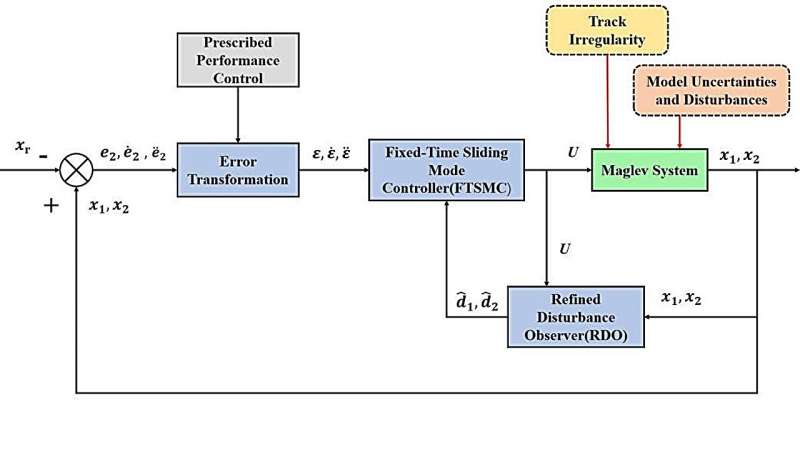
The maglev train represents a type of modern urban rail transit transportation tool, boasting many technical advantages such as low noise, green environmental protection, small turning radius, good stability and high comfort. These advantages are due to the suspension mode of the train.
The maglev train realizes the non-contact suspension and guidance between the train and the track through electromagnetic force. The linear motor generates electromagnetic force to propel the train, minimizing friction between the train and the track during operation and significantly enhancing overall operational efficiency.
Nonetheless, the maglev train is inevitably stimulated by track irregularities when tracking track operations. There are many reasons that can cause track irregularities, including stator surface offset and tilt, tilt of functional components, and line design and large-scale foundation settlement. Specific reasons correspond to track irregularities of different wavelengths, which deteriorate the control performance of the suspension system.
In a new study published in the journal High-speed Railway, a team of researchers from the School of Electronics and Information Engineering at Beijing Jiaotong University has proposed a composite control scheme for the high-speed electromagnetic suspension (EMS) train to suppress track irregularities.
"For track roughness interference in non input channels, it's considered as harmonic interference and estimated using a disturbance observer," explains corresponding author of the study, Xiuming Yao. "For the lumped interference in the input channel, an extended state observer was used for estimation. Due to the fact that the extended observer can estimate disturbances well without prior knowledge of interference information, using an extended state observer to observe disturbances has extremely high accuracy."
The refined disturbance observer proves adept at accurately estimating track irregularities and lumped disturbances amid uncertainties and exogenous disturbances. Moreover, the fixed-time controller, based on prescribed performance, swiftly compensates for disturbances within a predetermined time frame.
A prescribed performance fixed-time controller (PPFTC) was also designed to address and suppress disturbance estimates. Initially, prescribed performance control was employed to restrict the suspended air gap error. Subsequently, the error underwent transformation from a constrained space to an unconstrained space through a transformation equation, ensuring the safety of the control law design..
"The simulation results on the suspension system demonstrate that the proposed control scheme enhances the suspension air gap response and bolsters the stability of train operation," says Yao.
Looking ahead, the team suggests exploring the impact of high-speed compressed air flow between the vehicle body and track on the suspension system. Additionally, the researchers propose extending the control algorithm to the semi-bogies or full bogies of trains and validating it on testing lines in future research.
More information: Yiran Xie et al, Refined disturbance observer based prescribed performance fixed-time control of high-speed EMS trains with track irregularities, High-speed Railway (2023). DOI: 10.1016/j.hspr.2023.09.001
Provided by KeAi Communications Co.
Citation: Advancing high-speed electromagnetic suspension: A scheme for enhanced stability, track irregularity suppression (2024, January 16) retrieved 16 January 2024 from https://techxplore.com/news/2024-01-advancing-high-electromagnetic-suspension-scheme.html
This document is subject to copyright. Apart from any fair dealing for the purpose of private study or research, no part may be reproduced without the written permission. The content is provided for information purposes only.
